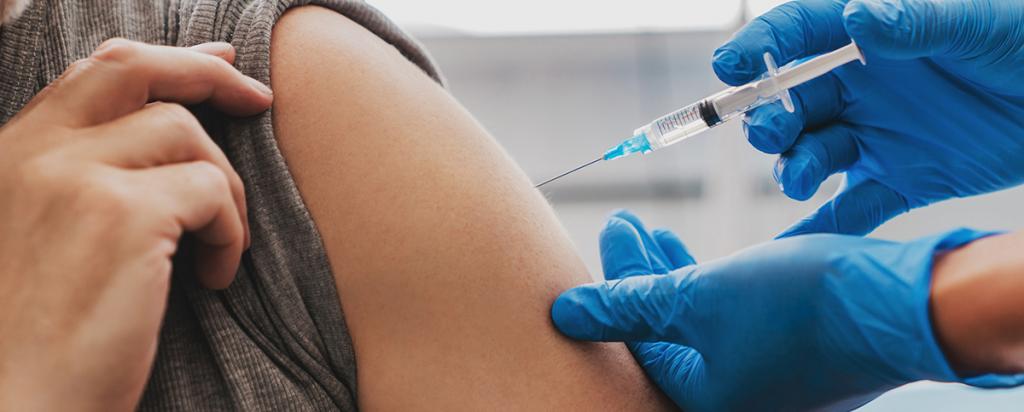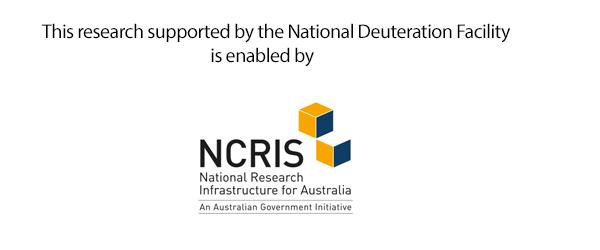

Published on the 7th June 2021 by ANSTO Staff
Key Points
-
Recent international research involved the deuteration of cholesterol for lipid nanoparticles to improve mRNA drug delivery and vaccines
-
The National Deuteration Facility at ANSTO provided the biodeuterated cholesterol, which was used with small-angle neutron scattering, to gain structural insights into the composition of the lipid nanoparticles
-
Deuteration can also be used to enhance the metabolic properties of some biomolecules and the structural integrity of some materials
The National Deuteration Facility is producing large quantities of deuterated biomolecules for both biomedical research and pharmaceutical industry clients.
Recently, the facility has provided deuterated cholesterol, an essential ingredient in lipid nanoparticles for mRNA-based drug delivery and vaccines, to academic and industry partners.
Nature Reviews has reported that lipid nanoparticles were promising because mRNA vaccines require a vehicle delivery that not only protects the nucleic acid from degradation but allows the mRNA to get into cells.
Lipid nanoparticles have been used by the major vaccine pharmaceutical companies in the development of vaccines using mRNA, including the production of mRNA vaccines against COVID-19.
However, research on lipid nanoparticles is ongoing as the lipid type, size, and surface charge impact the behaviour of the nanoparticle in the human body.
In an international research collaboration, led by the University of Malmö in Sweden and AstraZeneca recently published in ACS Nano, cholesterol was deuterated biologically in order to clarify the structure of lipid nanoparticles used as mRNA delivery vehicles.
Biological or chemical deuteration is a highly useful technique in which deuterium, also known as heavy hydrogen, is substituted for hydrogen at the molecular level.
The structure and composition of compounds that contained deuterated components can then be investigated using techniques such as small-angle neutron scattering.
Deuterating the cholesterol allowed the researchers to determine the core and shell structure of the lipid nanoparticles and the distribution of the various components at the surface. The investigation also elucidated what happens to a lipid nanoparticle when it comes in contact with proteins in the body, such as Apolipoprotein E.
The biodistribution and uptake of the lipid nanoparticles are affected by their surface composition as well as the interaction with extracellular proteins.
“Some deuterated compounds are available commercially but we provide a niche service for those that are not,” said co-author Dr Robert Russell.
Russell produced the deuterated cholesterol by growing specially modified yeast in heavy water.
“Our process is quite straightforward and efficient. We are also able to provide 100 mg quantities, which is more than what was needed for this study.”
“The yeast doesn’t normally make cholesterol but it was genetically engineered to produce it,” said Russell.
“Although lipid nanoparticles are simple in structure with the cargo, cholesterol, and other three lipids, when they are mixed together it is very difficult to differentiate them using x-ray techniques or neutron techniques without deuteration,” said Russell.

Small-angle neutron scattering of deuterated and hydrogenated components allows the composition of the lipid nanoparticle to be determined
This is where the use of contrast in small-angle neutron scattering, can mask or highlight the different components if they are deuterated.
Other collaborators on the research included Graz University of Technology (Austria) Jülich Centre for Neutron Science JCNS (Germany), and Institute Laue Langevin (France).
“The National Deuteration Facility is rapidly becoming one of the main sources of deuterated cholesterol for mRNA studies,” said Leader Dr Tamim Darwish, who was also a co-author on the paper.
“Cholesterol is also an essential ingredient in liposomes that holds the lipid molecules together and provide a protective environment for drug delivery,” said Darwish.
“We have been providing bespoke deuterated sterols and lipids to biotechnology pharma companies and expect this to become more in-demand with the challenges of virus outbreaks and the emergence of more mRNA therapies,” said Darwish.
“Deuteration can also be used to enhance the metabolic properties of some biomolecules and the structural integrity of some materials, which is the next frontier in deuteration science,” said Darwish.




